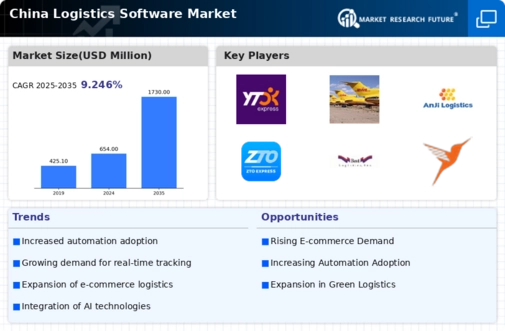The China Logistics Software Market has witnessed remarkable growth in recent years, driven by increasing demand for efficient supply chain management and the rapid digitalization of logistics services. The competitive landscape in this market is characterized by various key players that have carved their niches through technological advancements, strategic partnerships, and tailored solutions.
The integration of artificial intelligence, big data analytics, and the Internet of Things has significantly transformed logistics operations, giving rise to software solutions that not only enhance efficiency but also reduce operational costs. These innovations have fostered healthy competition among companies aiming to meet the evolving needs of businesses in an increasingly interconnected marketplace.
YTO Express has established itself as a strong competitor in the China Logistics Software Market by focusing on cutting-edge technological solutions and a robust logistic network. The company leverages advanced data management systems to optimize delivery routes and streamline operations, enhancing overall service efficiency.
With a significant market presence built over decades, YTO Express’s strengths lie in its vast operational infrastructure and commitment to continuous innovation. Its software solutions are tailored to address the unique challenges of logistics in China, ensuring that the company remains competitive against both local and international players.
By adopting a consumer-centric approach, YTO Express effectively meets client expectations, which has further solidified its standing in the marketplace. Suning Logistics has made considerable inroads in the China Logistics Software Market by offering a comprehensive suite of services designed to cater to the dynamic logistics needs of businesses.
The company specializes in warehouse management systems, transportation management solutions, and last-mile delivery optimization, ensuring it addresses all facets of supply chain logistics. Suning Logistics has a strong market presence, bolstered by its strategic mergers and acquisitions, which have expanded its operational capabilities across different regions in China.
The focus on integrating technology within its service offerings, such as automation in warehousing and real-time tracking systems, has positioned Suning Logistics as a formidable player. By committing to sustainable logistics practices and enhancing user experience through innovative software solutions, the company strengthens its competitive advantage in the China Logistics Software Market.



















